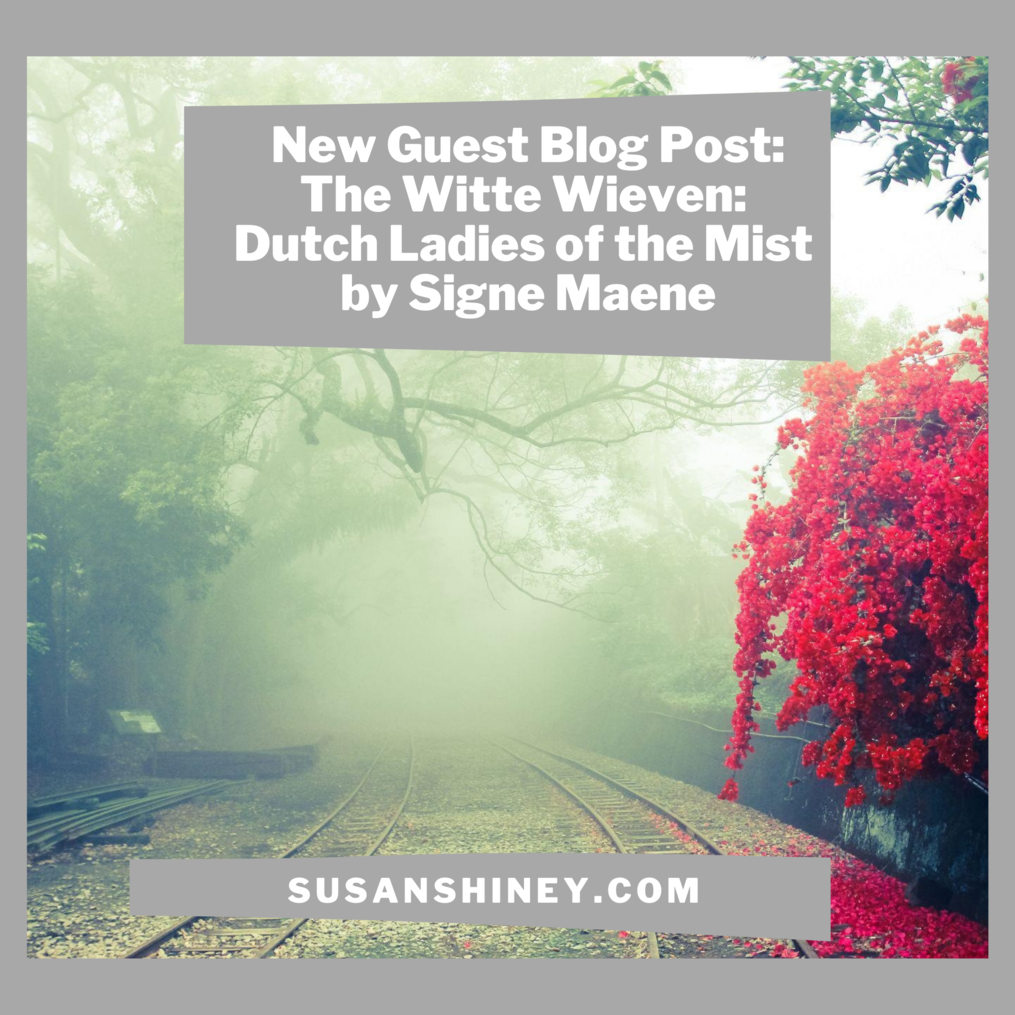
The first time I was introduced to stories about the Witte Wieven I was eleven years old. I remember watching a street performance of a group of women who were dancing in medieval dresses while golden ribbons tied to their wrists flew around them. My aunt was standing next to me. She’s always eager to tell you more about the history of a gargoyle on one of those buildings which you pass every day but never really notice the details of. She knows many Flemish, Dutch and French folktales and this was her chance to tell me about the Witte Wieven. According to her they are the spirits of wise women who appear as mist above fields or hills. My eleven-year-old self would have forgotten all about this the moment we passed by an ice-cream shop, but there was something special about that moment. The image of women who flew through the air as mist was one that bewitched me.
Years later, I realised that depending on who you ask Witte Wieven will be witches, ghosts, swamp women, fairies, fortune tellers, evil spirits or a combination of all of these things. I think that the mysteriousness and ambiguity that surrounds them might also be the reason why they have such a prominent place in Dutch mythology.
This post will focus on Witte Wieven as we know them from Dutch folktales but it’s important to note that they appear in stories from all over Europe. In France they’re known as Dames Blanches, in Germany they’re called Weiße Frauen, in England they appear as White Women and in the Walloon region of Belgium they have captured the imagination as Madama Blanche. Witte Wieven also have a lot in common with the Bean-nighe from Scotland, seeresses from Norse mythology and even the Korrigan from Breton folklore.
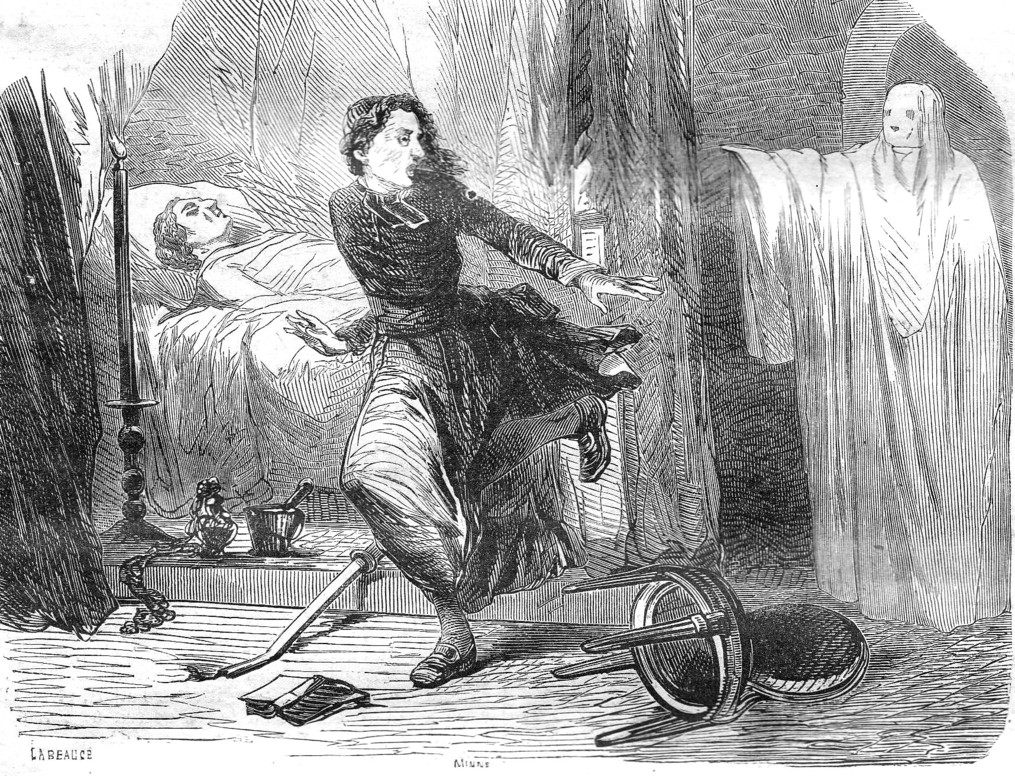
Dolmen, midwives and harbingers of death
Stories about our Dutch Witte Wieven are often at odds with each other. In some stories they are the spirits of women who have done evil and continue to do evil. They kidnap pregnant women or replace their infant with a changeling. Tales that depict Witte Wieven as kind and wise are a lot more difficult to find but they do exist. Here, they act as midwives and offer aid when they meet a woman who is about to give birth.
What most tales do agree on is that they live in burial mounds, dolmen, castle ruins and cairns. This makes sense since folklorists think that belief in them originates from the Germanic era. Their chilling and somewhat creepy choices of abode is also in tune with their reputations as ‘omens of death.’
Like the Scottish Bean-nighe who washes the clothes of those who are about to die, Witte Wieven are often seen as harbingers of death. In some regions of the Netherlands it’s believed that crossing paths with them means that a death will occur in your family. In other regions they appear as mist at night to lure innocent people to their death. Their advice is always the same: never follow the mist or you might never be seen again.
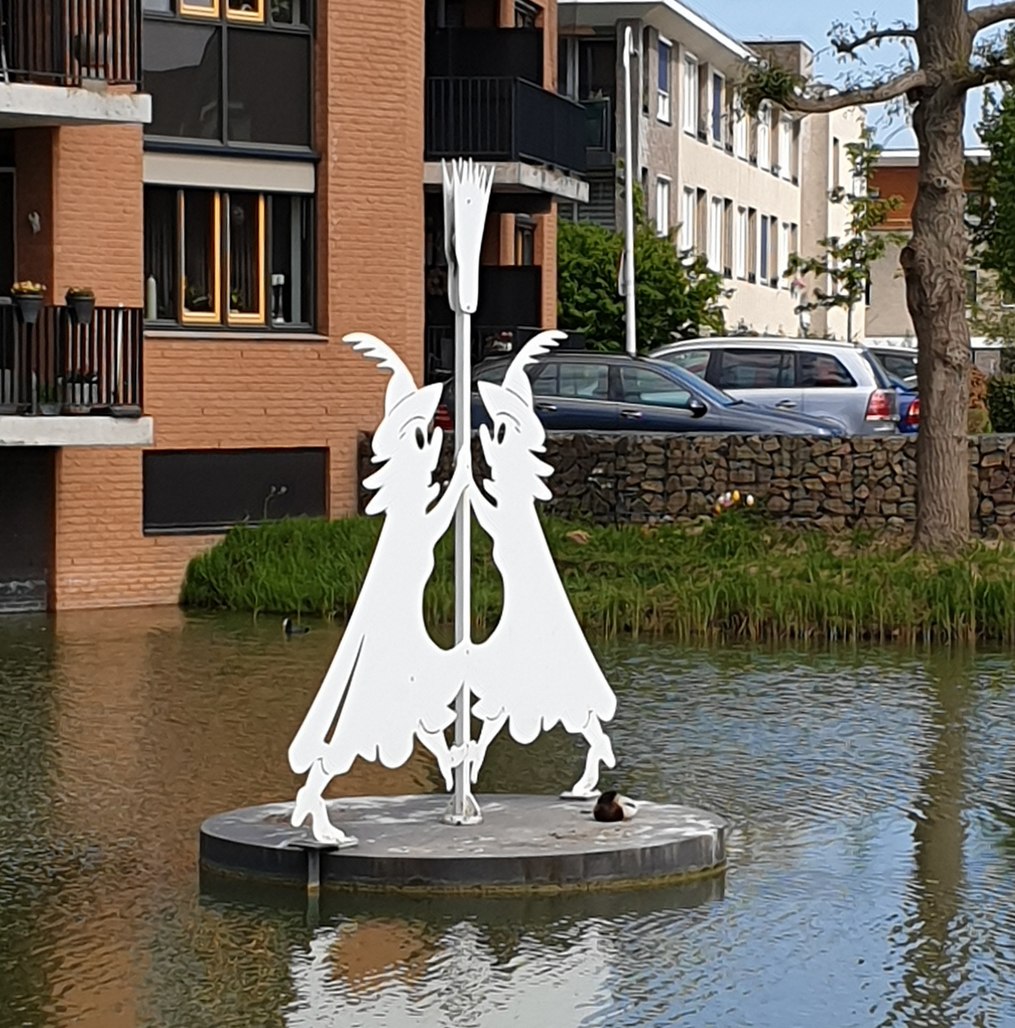
Fairies, witches and dancing
I think that one of the reasons why Witte Wieven are often associated with fairies and witches is because they are quite fond of dancing. Most of us are familiar with the image of fairies dancing around fairy rings. In Belgium and the Netherlands fairy rings are known as a heksenkring which would translate as a witches’ circle. Popular lore tells us that these circles grow overnight after a group of witches have been dancing around them.
It’s said that Witte Wieven often leave their cairns and old castles to dance in the forest. One story tells about a farmer from Montferland who had too much to drink. Emboldened, he asked one of the Witte Wieven to dance with him. She agrees and turns him around and around until his feet will no longer cooperate and he drops down dead. Another story from the same area tells about a man who also died after asking one of the Witte Wieven for a dance. Soon after the lady is seen digging a heavy metal chest out of the ground near the cottage of a forester. It’s said that Witte Wieven are very fond of valuables and always know where to find them, especially in the forest.
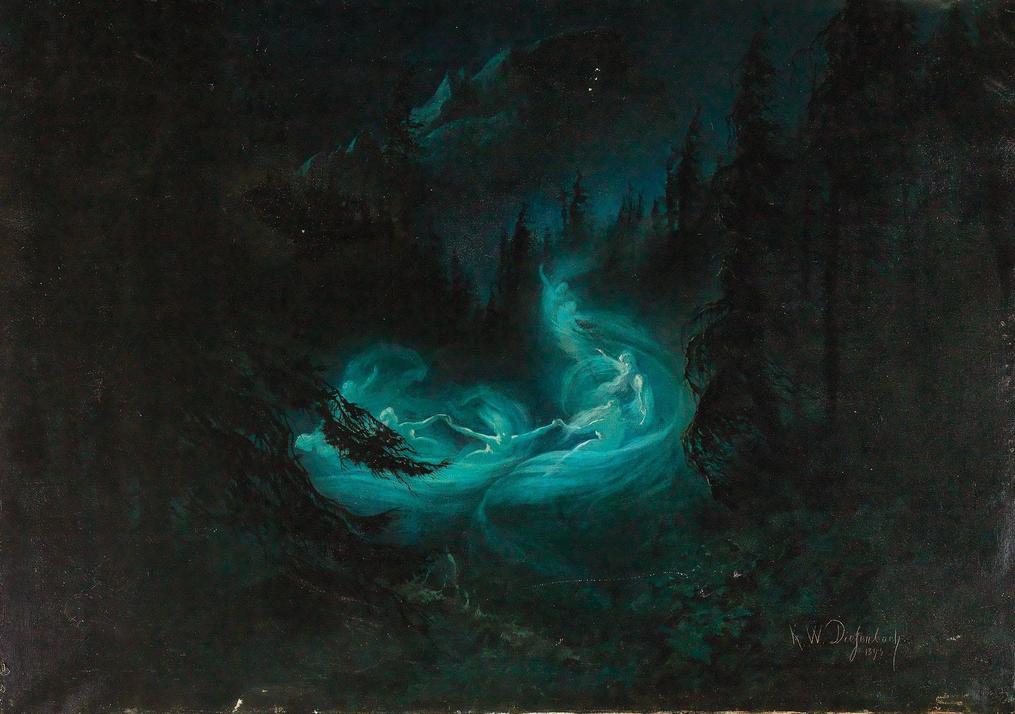
Dangerous words
One thing that many tales about Witte Wieven have in common is that a couple of words can mean the end for you. One such tale takes place in Tubbergen. According to local folklore Witte Wieven who live there have very long, sharp nails and are skilful hunters. One day a woman from the village goes to the well to get water. She is ambushed by twenty Witte Wieven. They abduct her and she is made to dance with them on the top of a mountain. When her husband arrives home from work, he finds it a bit odd that his wife is nowhere to be found. He assumes that something must have delayed her but then he hears her voice whispering from the far distance. He goes to the neighbours who offer to go with him and aid him in search for his wife. On the road they encounter a group of Witte Wieven but manage to scare them off by firing their guns. They find the abducted woman shaking in a ditch. The mist follows them as they go home, and it says that the woman will be a prisoner forever if she doesn’t return to the Witte Wieven voluntarily. They ignore the words and the mist curses her. If someone speaks the words ‘go away pig,’ the woman will be forced to spend the rest of her days dancing on the mountain. Everyone in the village swears that they will never speak those words. Meanwhile the cursed woman finds it impossible to return to her previous life. She spends her days staring blankly at the wall. She knows that one day the inevitable will happen. And of course, as anyone could have predicted, a servant gets angry at the pigs and accidently speaks the words that condemn the woman. She disappears but is often seen again, dancing on a mountain wearing gold earrings and a pearl necklace while tears roll down her cheeks.
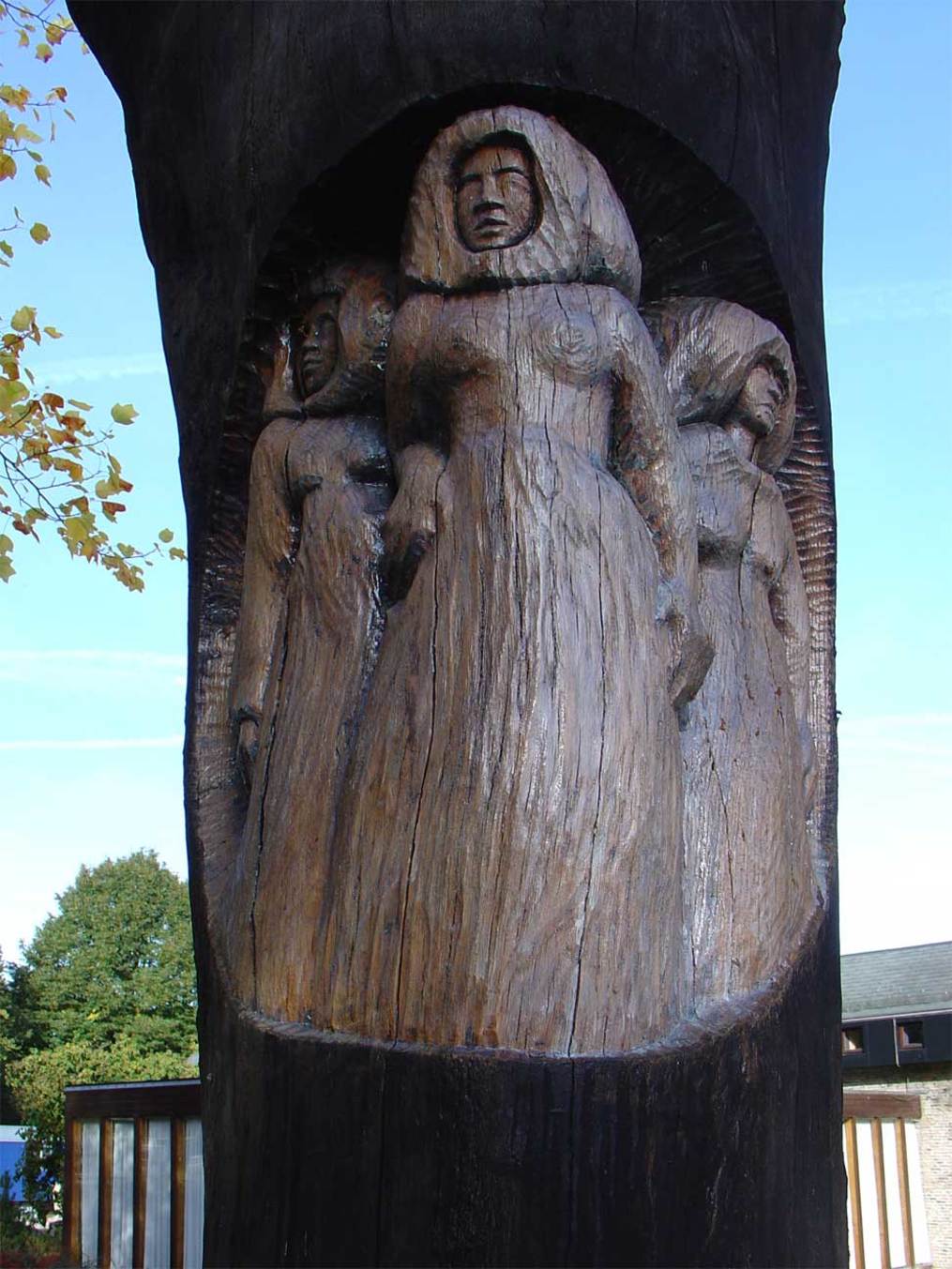
Conclusion
The reason I chose to include this story is because it includes many of the characteristics associated with Witte Wieven. There’s the mist, dancing, abduction and a fondness for treasure and jewels. Like many other figures from folklore Witte Wieven are timeless. The same tales that fascinated our ancestors centuries ago continue to fascinate us today and hopefully they will continue to fascinate many future generations.
Bio
Signe Maene lives in Ghent, Belgium and is currently working on a novel set during The French Revolution. She writes short stories in many different genres, and occasionally some poetry. She’s also very passionate about folklore and fairy tales. Her Twitter handle is @maenesigne and you can find out more about her and her publications at www.signemaene.com